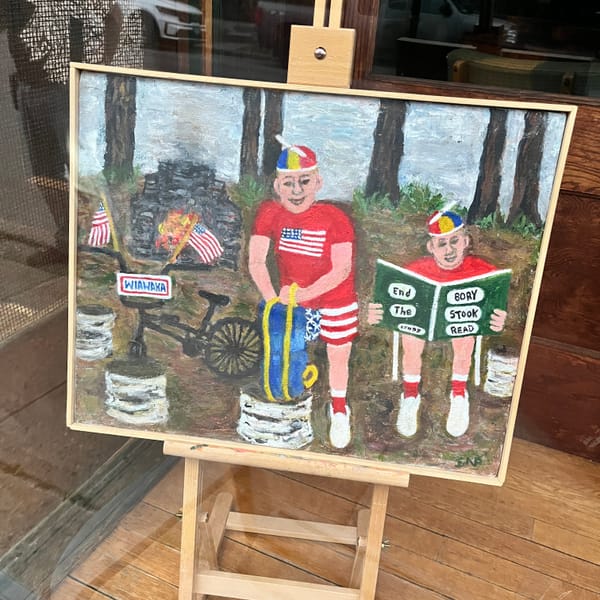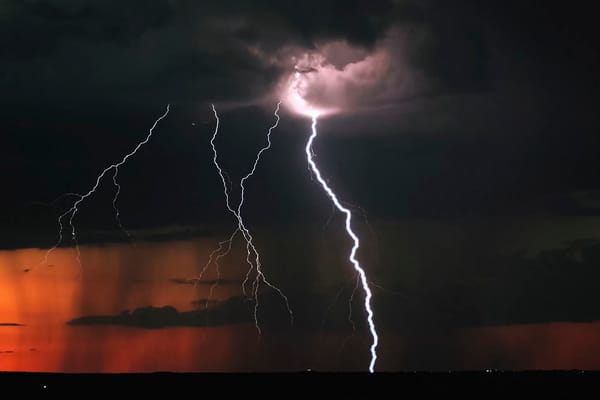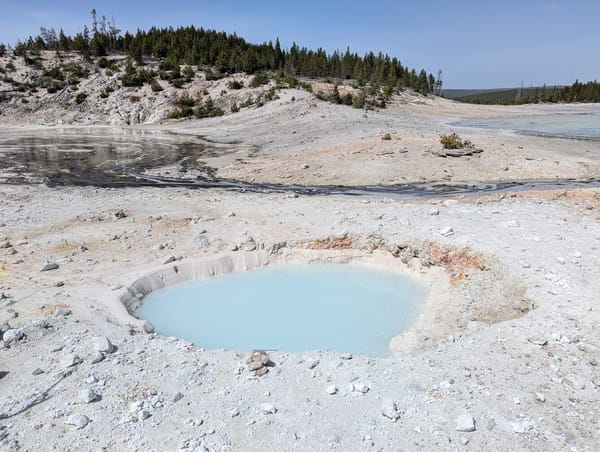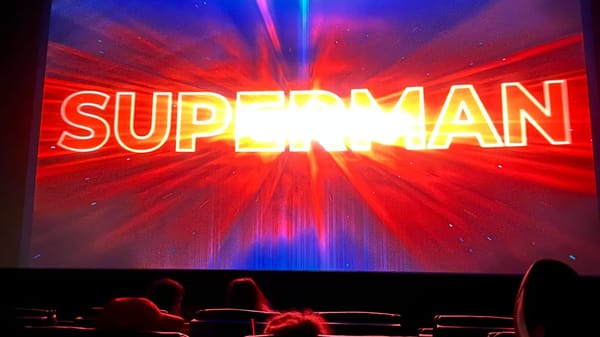Indignity Vol. 2, No. 38: Fury road.
MERGING TRAFFIC DEP'T.

Driving Is the Worst Thing in America
HERE IS ANOTHER crossover edition of Indignity! This time, we join up with Alex Pareene, proprietor of the vital politics-etc. newsletter The AP, to discuss our common enemy: the American automobile.
TOM SCOCCA, INDIGNITY: Hello! The mayor of London, Sadiq Khan, came to New York this week, on a trip to promote tourism. Over the weekend, on your Substack newsletter, The AP, you wrote about one of the less prominent attractions of London: an electric delivery truck that's designed to avoid killing people, with a lowered and glassed-in cab that meets the city's "Direct Vision Standards." Khan has also announced that he wants to cut London's overall traffic by 27 percent by the end of the decade, to meet climate goals. Meanwhile, our own city is overrun—literally—by cars, and by illegal oversized trucks. Congestion pricing, a policy London has had for nearly 20 years, still hasn't been implemented here. Illegal parking is rampant. The "Vision Zero" initiative, Bill de Blasio's program to cut traffic deaths, has accomplished essentially nothing. Your newsletter is dedicated to politics in general, but it has struck a chord with readers by addressing this particular issue: while some people talk about a "War on Cars" by ecology- and safety-minded reformers, what we actually face is a century-long war against us, by cars. Do we have any chance of winning?
ALEX PAREENE, THE AP: On the one hand, the period since the start of the pandemic has seen the complete overrun of New York City streets by private automobiles, many of them dubiously registered and irresponsibly driven; the election of a mayor notorious for allowing city employees to treat public plazas as private parking lots, and for driving on the sidewalk in view of a reporter camped outside the Brooklyn residence he likely lied about living in; and the apparent slow-walking of congestion pricing to a possible death or defanging. Traffic violence is getting worse and many of our policymakers seem to be under the impression that the solution to the problem is hoping for technologist snake oil like self-driving cars and Hyperloops to fix it without inconveniencing a single commuter.
On the other: There has likely never been a better time since the 1920s to be an Anti-Car person. Books like Jessie Singer's There Are No Accidents are given respectful hearings in mainstream publications, and Subaru-driving liberals listen to podcasts like The War on Cars. As you say, I've gained an audience writing about these issues, and what's more (not to be self-aggrandizing) I think I've helped educate my pre-existing audience on these issues. I actually got a really wonderful comment on a paywalled letter I wrote the other day, which I'll reprint below:
I live upstate, in Albany, and while I live in a more urban area, my wife and I need cars to work and do everything else. Getting on Twitter and subscribing to The AP has been eye-opening, and I will never find this topic alienating.
Even out here, among small cities and suburban and rural towns, driving sucks. Open, uncrowded roads are great in theory, but that's not what you drive on when you're going to work. Two weeks ago, I saw a fiery truck crash that took 4 lives, a couple of times in recent memory, I've almost been run off the road by an inattentive semi. Actually, very bad!
My grandfather used to train in to work at GE (in Schenectady, NY) from a small rural town. He'd grab a drink before the trip back. All those train and trolley lines are long gone now, but public transportation that could work in NYC or upstate is not a pipe dream, and that we don't do that is a choice.
As I become older and grumpier, I am not inclined to defend cars, I am more inclined to resent that I have to maintain a 1.5 ton steel box with a complex set of subsystems that are more and more prone to failure, resent that that I have to pay insurance for this thing, resent that driving to my stupid job has a non-zero risk of injury or death, and I resent that all this nonsense is rendering the planet uninhabitable, in an obvious way.
I cheer for pedestrians who walk out into the middle of our cities two lane streets, and brake for everyone. Thinking about cars, roads, and public transit Has made me much more conscious about everyone not in a car, too.
In short, keep it coming!
To even notice, let alone question, automobile dependency in this country is still a very niche position, but challenging it is no longer limited to the fringe. It helps immensely that the internet gives us a way to see, with our own eyes, that things can be, and are, different in other places—like London, where the mayor who oversees and seeks to vastly expand a congestion pricing scheme just easily won reelection.
INDIGNITY: This ideological journey is a familiar one to me. I grew up in a totally car-dependent rural and small-town setting, and now I live in Manhattan and I don't have a car at all. In between, I racked up six digits' worth of commuting miles, owning and loving cars of my own. I was a relatively normal American car person. Over the last decade or two, though, I've been fully radicalized against cars.
Right before Easter this year, I rented a car and drove up from New York to see friends in Boston. We hit traffic before we were even off the Manhattan grid, and we stayed mired in traffic for most of the next five hours. As I was creeping across Connecticut on Route 15 in the pouring rain, in bumper-to-bumper traffic in the gathering dark, I finally fully articulated the obvious revelation I've been moving toward for all these years: This is horrible. Driving a car is a horrible thing to have to do. Being caught in a traffic jam isn't a frustrating and unfortunate exception to the real driving experience, it is the driving experience. Life with the automobile means you are guaranteeing yourself—sooner or later but probably sooner—complete and total misery, again and again, if you're lucky enough to avoid outright carnage. Hell is other people's cars, and your car does not exist without other people's cars, and there we all are.
Any time the lousy world we live in fails to align with the better world we envision in our heads, the easiest coping mechanism is to blame it on everyone's false consciousness. But this seems entirely and sincerely true of the American automobile. Nobody would choose to live like this, if they were choosing from the beginning. We take it all for granted—the unconscionable death toll, the noise and pollution, the rage and wasted hours, the unbelievably vile and depressing default landscape we have built up to serve the needs of these machines that rule our lives.
In New York, this is particularly striking because the city has the alternatives mostly already built into it. They're just subjugated to cars or otherwise made stupid and inaccessible. The whole reason I was stuck in that traffic jam in Connecticut was that railroad tickets between New York and Boston were so prohibitively expensive for a family of four as to make a rental car the only reasonable option. Fast, affordable intercity rail travel, like congestion pricing and those electric trucks, is something utterly normal and achievable in the rest of the world that we just...can't do? Won't do? It is the perfect example of the kind of quality-of-life problem New York suffers—like trash piled on the sidewalks—that has been fully and completely solved, as a problem, elsewhere. How do we get our city and our country to do these things that are so self-evidently doable?
THE AP: Yeah so I think (while we dutifully pegged this to the news) this discussion was in part inspired by the fact that each of us "had to" drive lately. We're staying in a temporary place while work is being done on our apartment, and we rented a car to move into a short-term rental. My wife, a New York native, doesn't drive, so when we travel or do stuff like this it's my responsibility. And just the experience of loading up a car with the items we need for a month and driving a few blocks south and east to deposit them in the rental was almost enough to ruin my whole day. And I thought about people who do this every day, voluntarily! The joy of the open road is the sales pitch, but the reality is circling the block in central Brooklyn looking for a quasi-legal parking space, knowing the whole time that if you were close enough friends with a cop you could just pull up on the sidewalk.
What struck me is how quickly and easily you become a sociopath, even a borderline eugenicist, behind the wheel; everyone else is the problem, there are too many people here, this would all be fine if it weren't for all these OTHER people, etc. And then you connect that to all other politics, and it unlocks so much. People don’t want more neighbors because of traffic. Not wanting more neighbors is a short trip to some really dark beliefs. And it's literally just a mood tied to driving. I've never walked to the park and been upset at how many other people decided to walk to the park that day! Regularly driving in American cities is the fastest route to Malthusian thinking and it's entirely about traffic and parking.
Despite that obsessive fear of traffic, though, a weird thing about modern U.S. motordom is that "sitting in your car" has become so normalized that it doesn't scan as unpleasant to many Americans. I saw some tweet about a college graduation ceremony where everyone idles in a very long and slow-moving line of cars—literally just sitting in traffic!—and it's not, like, a Covid thing, they just like doing this. Growing up in the vast middle of the country there was almost nothing I looked forward to less than spending hours in the car, but I suspect at this point we've...made the interiors too nice? Like, you are correct about the false consciousness, where people actually can't see how their own lives are made worse for their own dependence on the automobile, but the adaptation seems to have been to make the vehicles mobile extensions of the living room, in a way my aunt and uncle's 1990s Dodge Caravan, with no built-in screens or entertainment options besides the radio, just couldn't have been.
If you haven't ever heard Doug from The War on Cars' interview with Ray Magliozzi from Car Talk, I recommend it. It's oddly moving, because it's this voice from the back of that Caravan expressing thoughts he wouldn’t have said so explicitly back then, which speaks to the cultural change I was talking about. His brother Tom hated cars! In the interview he says his own child's family bought a massive SUV because it's "safer," and "that tipping point is when you have kids," and you suddenly become much more concerned with safety. And you really do! But there's "you become more concerned about safety so you fight to make the conditions safer for everyone" and there's "you become more concerned about safety so you buy a gun," and, not to be hyperbolic, but I feel like Americans felt they had no choice but to buy the vehicular equivalent of guns.
To your very important questions, the best historical model for the culture and policy shift we're talking about was a national campaign about child safety that made child safety a collective, and not individual, responsibility. And, obviously, that should be no trouble at all to repeat in the United States, right? Anyway, dad to dad, are your kids into cars?
INDIGNITY: [As-a-Parent Voice:] As a parent, I've found my most dramatic shift in perspective has been that I self-consciously turn off that double standard that goes with getting behind the wheel of a car: I do not have a right to go as fast as I want in the city, or on residential streets elsewhere, at all, ever. These are the streets my family has to walk on. My wife did get hit by a car this year, in fact—no lasting harm done, but the person who knocked her down in a crosswalk while they were making a turn had the gall to yell at her for having been there. So no matter how late I am, no matter how annoyed I've been to be stuck at a light, if I run someone over because I thought my time was more important than their life, their survivors have a moral right to hunt me down and kill me.
My older child is an ideological hyper-urbanist and when he was very young basically ignored his Matchbox-style cars to run his Munipals wooden subway cars across an elaborately labeled set of real and imaginary stops. His little brother, once he was old enough to get around, crawled into the closet and hauled out the cars and eagerly took possession of them. He also insisted on watching the Pixar Cars movies and being read to from the Pixar Cars storybook, and a few years later, at the dawn of the pandemic, made us stream the entire Fast & Furious cinematic arc. His happiest memory of visiting L.A. is how we sat at an outdoor brunch place as an endless stream of absurd luxury supercars went by. For his sake, I took the children to the New York Auto Show (riding the 7 train extension to get there, which gave his brother something to appreciate).
I don't not get it. I still like certain cars, within my preferred typologies, quite a lot. The knowledge that Volkswagen was historically founded by Nazis for Nazis and is presently an ecocidal criminal fraud enterprise cannot turn off the part of my mind that lights up at the sight of a GTI or one of those Golf wagons. The younger child and I both admire the current Mazda3.
But he shares my loathing for SUVs and monster pickup trucks, which are the literalization of that culture of hate and sociopathy you're talking about. With all due respect to Click's grandchildren's well-being, these things are built to terrorize people who are outside the vehicle, and to make them invisible to the people within. The program of terror is quite explicit! The designer of the GMC Sierra has said so, plainly: "We spent a lot of time making sure that when you stand in front of this thing it looks like it’s going to come get you. It’s got that pissed-off feel." He praised his favorite trim level as "mean and violent" and "animalistic." (He also said his design inspirations included locomotives, "the barrel of a gun," and Detroit's giant statue of Joe Louis' fist.)
In a way, this degree of lunacy might make reform easier? People who want to get cars under control like to encourage people to use terms like "automobile violence" rather than the old, empty blame-denying language of "accidents." With vehicles being built to intentionally convey the threat of violence—to look like they're going to "come get you"—it may be easier to convince people to see the harm they do in those terms. How can you deny the collective child-safety threat when the grilles are taller than even the average middle-schooler?
Likewise, the popularity of these monstrosities means we can't stop the violence even if we magically summoned the political will tomorrow to regulate their size or to impose crash-safety standards for people outside the cars, as other countries do. Today's car/trucks are still going to be around to mow people down for another generation, unless a radical spike in gas prices forces them off the road.
And so it seems the roads themselves will need to stop them from mowing people down. Again, as you know, these are problems that engineers know how to solve. Vehicles that stand six and a half feet tall and weigh two and a half tons have no business moving faster than a crawl if people are around. Roadway design can force them to do it—by squeezing in on them from the sides, by making them go over bumps and through slaloms, and by otherwise requiring drivers to pay attention to the living community around them rather than zoning out in their vehicular living rooms and expecting the world to make way for them. What are your favorite underused interventions, and how do we get more of them?
THE AP: Yeah I've complained about this to you before, but if you want to talk interventions, we, or "we," know what works, we just mainly don't do it. American cities have been pretending to do something called "Vision Zero" for a decade now. "Vision Zero," which is discussed in the piece I linked earlier about the Dutch Kindermoord campaign, is, in Scandinavia, a holistic plan for reducing traffic deaths, and is, in the U.S., a bumper sticker. The main way to make our streets safer that we refuse to do is to narrow them significantly and force drivers to pay attention. We talked to Charles Marohn for the podcast I do with The New Republic a while back and he's a great interviewee because he's this conservative guy from suburban Minnesota, who is also an engineer, who came to the same realizations we have but with more inside knowledge. And he will tell you, and he has been trying to tell his entire profession, that these are basically solved problems that our engineers don't want to hear. Everything about the way we design streets is based on the idea that it should be easy to speed and make U-turns on streets where those things are formally forbidden. The very basic traffic engineering safety insight of proper "Vision Zero" cities is that driving should be a bit tricky, instead, so that you are paying close attention to the fact that you are currently piloting a very heavy and deadly vehicle, and not relaxing on the couch listening to a podcast. I find driving stressful, and it sounds like you do too, and one problem is that lots of other people don't, because the streets are designed to make people unaware of how much harm they could cause at any moment.
"Level of service" is the original sin of American traffic engineering. It's the idea that the street's ideal usage is moving the greatest number of cars as efficiently as possible. But of course, people who live on streets, which is most people, don't rate them that way. New York’s experiments with car-free "open streets" have basically not touched our neighborhood because our neighborhood doesn't get nice things, but we go up to Vanderbilt or Fifth Ave for their open streets many weekends. And my kid is always excited when we do, because there is something thrilling about just being able to walk down the middle of the street, about being able to have unfettered access to this public space that is generally off limits to you. And on those weekends, Utica Ave, for example, is moving many, many more vehicles than the street we are on, and we also have no reason whatsoever to patronize any of the businesses on it. For the traffic engineer, Utica Ave is fulfilling its highest duty on that Sunday, and Fifth Ave is incredibly inefficient, because hundreds of people are walking around eating brunch and playing games on it.
I am mildly optimistic that this administration's Department of Transportation might eventually decide to do something to regulate vehicular safety for people outside of vehicles. Mayor Pete says many “right” things. But in the medium term, your best hope, your only hope, is to fight for this stuff locally, in your town, in your state.
INDIGNITY: "Vision Zero" in New York is a grim misnomer. I can't stop thinking, though, about what life would be like if the city did take the "Zero" part seriously—if the response to every single death in traffic was to immediately close the roadway or intersection where it happened, and not to reopen it until they had physically made it impossible for the same thing to happen again. When a chunk of a building facade comes crashing down, the sidewalk gets closed and protected with a sidewalk shed pending repairs; if you're careless enough with your building to harm someone, you can even be charged with a crime. What if when someone in a crosswalk got hit by a turning car, the Department of Transportation showed up and converted it overnight into an elevated crosswalk? (What if every crosswalk in the city could be an elevated crosswalk, so that the grid of roadways was constantly interrupted by sidewalks, rather than the other way around?)
One hopeful point of reference for changing our relationship to cars comes not from the impossible (though, we must never forget: actually presently existing) pedestrian-and-transit wonderlands of Europe, but from Middle America. My in-laws live in Carmel, Indiana, a suburb due north of Indianapolis. As you approach it, you are passing through what seems like a fully ordinary flat heck-scape of shopping plazas and garage-forward housing developments and two-lane highways carved out of farmland. Then you exit the main highway and enter...a roundabout. You transit the roundabout and in short order you encounter another, and another. Around the turn of this century, Carmel decided it was going to replace as many of its intersections as possible with traffic rotaries. Instead of being stuck at stoplights and/or T-boning one another at standard exurban perpendicular crossings, the people of Carmel have learned to slow down and smoothly and attentively navigate circle after circle. It is a point of municipal pride now that Carmel leads the nation in roundabouts, and that its accident rates and insurance premiums have plummeted. The reigning American fatalism of "We're just built different" gave way to actually building something different.
THE AP: It feels very American to reinvent the roundabout and feel a lot of civic pride over it.
INDIGNITY: If only we could plunder the Beijing–Shanghai high-speed rail for New York–to–Chicago service.






